This essay was first published by László Moholy-Nagy in 1936, and is reproduced here with permission from the Moholy-Nagy Foundation.
The terminology of art “isms” is truly bewildering. Without exactly certain what the words imply, people talk of impressionism, neo-impressionism. pointillism, expressionism. Futurism, cubism, suprematism, neoplasticism. purism, constructivism, dadaism, super realism – and in addition there arc photography, the film, and light displays. Even specialists can no longer keep abreast of this apocalyptic confusion.
It is our task to find the common denominator in all this confusion. Such a common denominator exists. It is only necessary to study the lessons of the work of the last hundred years in order to realize that the consistent development of modern painting has striking analogies in all other spheres of artistic creation.
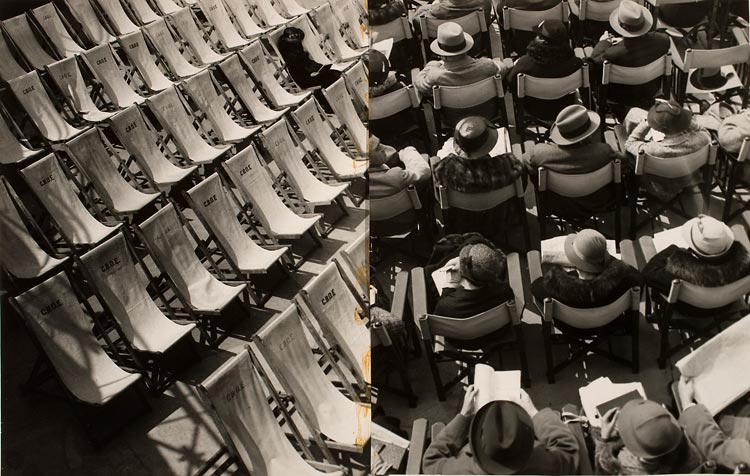
THE COMMON DENOMINATOR
The invention of photography destroyed the canons of representational: imitative art. Ever since the decline of naturalistic painting, conceived as “color morphosis,” unconsciously or consciously sought to discover the laws and elementary qualities of color. The more this problem emerged as the central issue, the less importance was attached to representation. The creator of optical images learned to work with elementary, purely optical means.
Approached from this point of view all the manifold “isms” are merely the more or less individual methods of work of one or more artists, who in each case commenced with the destruction of the old representational image in order to achieve new experiences, a new wealth of optical expression.
SIGNS OF THE NEW OPTICS
The elements of the new imagery existed in embryo in this very act of destruction. Photography with its almost dematerialized light, and especially the use of direct light rays in camera-less photography and in the motion picture, made clarification an urgent necessity.
Investigations, experiments, theories of color and light, abstract displays of light-images-as yet far too fragmentary and isolated point towards the future, though they cannot as yet provide a precise picture of anything like the future’s scope.
But one result has already, emerged from these efforts: the clear recognition that apart from all individual emotion, apart from the purely subjective attitude of the spectator, objective factors determine the effectiveness of an optical work of art: factors conditioned by the material qualities of the optical medium of expression.
MINIMUM DEMANDS
Our knowledge concerning light, brightness, darkness, color, color harmony-in other words our knowledge of the elementary foundations of optical expression is still very limited (in spite of the tireless work of the numerous artists). Existing theories of harmony are no more than the painters’ dictionary. They were elaborated to meet the needs of traditional art. They do not touch our present aesthetic sensibilities, our present aims, much less the entire field of optical expression. Uncertainty reigns even with regard to the most elementary facts. Innumerable problems of basic importance still confront the painter with the need for careful experimental enquiry: What is the nature of light and shade? Of brightness-darkness? What arc light values? What are time and proportion? New methods of registering the intensity of light? The notion of light? What are refractions of light? What is color (pigment)? What are the media infusing life with color? What is color intensity? The chemical nature of color and effective lights? Is form conditional on color?-On its position in space?-On the extent of its surface area? Biological functions? Physiological reactions? Statics and dynamics of composition? Spraying devices, photo and film cameras, screens? The technique of color application? The technique of projection? Specific problems of manual and machine work? etc .. etc .. etc. Research into the physiological and psychological properties of the media of artistic creation is still in its elementary stages, compared with physical research. Practical experience in the creative use of artificial color (light) as yet scarcely exists.
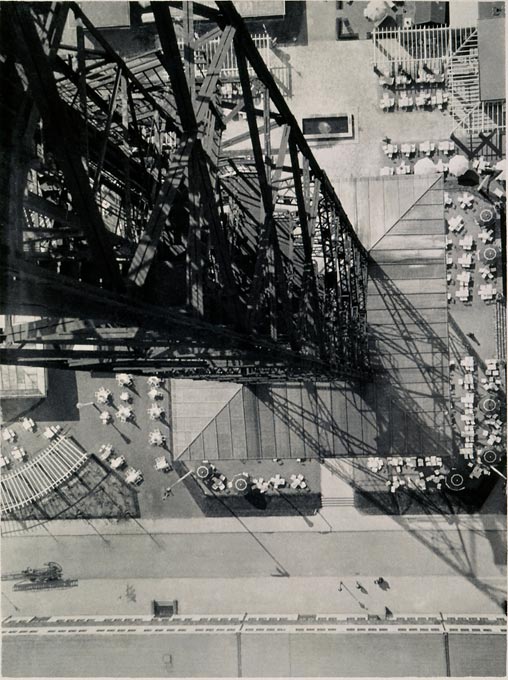
THE FEAR OF PETRIFICATION
Artists frequently hesitate to apply the results of their experiments to their practical work, for they share the universal fear that mechanization may lead to a petrification of art. They fear that the open revelation of elements of construction, or any artificial stimulation of the intellect the introduction of mechanical contrivances may sterilize all creative efforts.
This fear is unfounded, since the conscious evocation of all the dements of creation must always remain an impossibility. However, many optical canons arc elaborated in detail, all optical canons are elaborated in detail will retain the unconscious spontaneity of its experience as its basic element of value.
Despite all canons, all inflexible laws, all technical perfection, this inventive potency, this genetic tension which defies analysis, deter, mines the character of every work of art. It is the outcome of intuitive knowledge both of the present and of the basic tendencies of the future.
ART AND TECHNIQUE
The attempt was made, at least partially. to restore the capacity for spontaneous color experience-which had been lost through the spread of the printed word and the recent predominance of literature by intellectual means. This was only natural for in the first phase of industrial advance the artist was overwhelmed by the intellectual achievements of the technician, whose achievements embodied the constructive side of creation.
Given a clear determination of function, the latter could without difficulty (at least in theory) produce objects of rational design. The same was assumed to be true in art, until it became apparent that an exaggerated emphasis on its determinable intellectual aspects merely served as a smoke-screen, once the elements of optical expression as such-quite apart from their “artistic” qualities-had been mastered. It was, of course, necessary first to develop a standard language of optical expression, before really gifted artists could attempt to raise the elements thus established to the level of “art.” That was the basic aim of all recent artistic and pedagogic efforts in the optical sphere. If today the sub-compensated element of feeling revolts against this tendency. we can only wait until the pendulum will react in a less violent manner.
FROM PAINTING TO THE DISPLAY OF LIGHT
All technical achievements in the sphere of optics must be utilized for the development of this standard language. Among them the mechanical and technical requisites of art are of primary importance. Until recently they were condemned on the grounds that manual skill, “personal touch,” should he regarded as the essential thing in art. Today they already hold their own in the conflict of opinions; tomorrow they will triumph; the day after tomorrow they will yield results accepted without question. Brushwork, the subjective manipulation of a tool is lost, but the clarity of formal relationships is increased to an extent almost transcending the limitations of matter; an extent in which the objective context becomes transparently clear. Maximum precision, the law of the norm, replaces the misinterpreted significance of manual skill.
It is difficult today to predict the formal achievements of the future. For the formal crystallization of a work of art is conditioned not merely by the incalculable factor of talent, but also by the intensity of the struggle for the mastery of its medium (tools, today machines). But it is safe to predict even today that the optical creation of the future will not be a mere translation of our present forms of optical expression, for the new implements and the hitherto neglected medium of light must necessarily yield results in conformity with their own inherent properties.
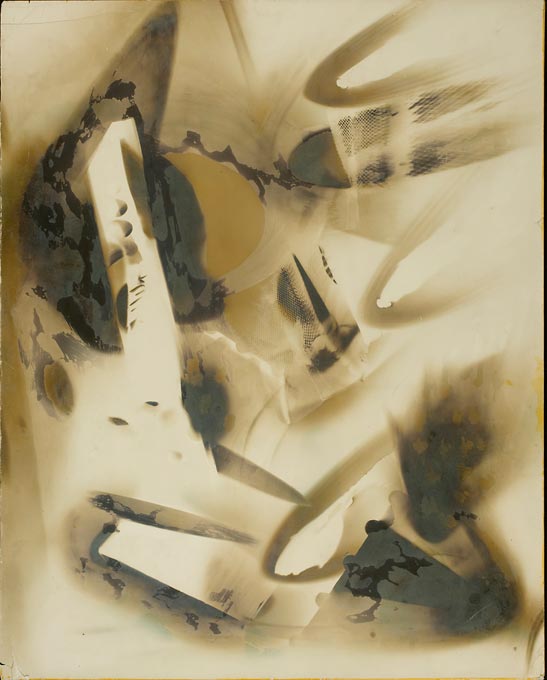
PURPOSIVE PROGRESS OF THOUGHT, CIRCULAR ADVANCE OF TECHNIQUE
During the intermediary stages, however, we must not overlook a well-known factor retarding the advance of art: individual pioneers invent new instruments, new methods of work, revolutionizing the traditional forms of production. But usually a long time must elapse before the new can he generally applied. The old hampers its advance. The creative potentialities of the new may be clearly felt, but for a certain time it will appear clothed in traditional forms that are rendered obsolete by its emergence.
Thus in the sphere of music we must for the present content ourselves with the noisy triumphs of the mechanical piano and of the cinema organ, instead of hearing the new electro-mechanical music that is, entirely independent of all previously existing instruments. In the sphere of painting the same revolutionary significance already applies to the use of spraying devices, of powerful enamel reflectors and of such reliable synthetic materials as galalith, trolit, bakclite, zellon, or aluminum. The situation is similar in the realm of the cinema, where a method of production is regarded as “revolutionary,” whose creative achievements are scarcely greater than those that might be obtained could classical paintings be set in motion.
This situation is unsatisfactory and superannuated when judged in terms of a future in which light displays of any desired quality and magnitude will suddenly blaze up. and multicolored floodlights with transparent sheaths of fire will project a constant flow of immaterial, evanescent images into space by the simple manipulation of switches.
And in the film of the future we shall have constant change in the speed and intensity of light; space in motion constantly varied through the medium of light refracted from efflorescent reflectors; flashes of light and black-outs; chiaroscuro, distance and proximity of light; ultra violet rays, infra-red penetration of darkness rendered visible-a wealth of undreamt-of optical experiences that will be profoundly stirring to our emotions.
A NEW INSTRUMENT OF VISION
In photography we possess an extraordinary instrument for reproduction. But photography is much more than that. Today it is in a fair way to bringing (optically) something entirely new into the world. The specific elements of photography can be isolated from their attendant complications, not only theoretically, but tangibly, and in their manifest reality.
THE UNIQUE QUALITY OF PHOTOGRAPHY
The photogram, or camera-less record of forms produced by light which embodies the unique nature of the photographic process, is the real key to photography. It allows us to capture the patterned interplay of light on a sheet of sensitized paper without recourse to any apparatus. The photogram opens up perspectives of a hitherto wholly unknown morphosis governed by optical laws peculiar to itself. It is the most completely dematerialized medium which the new vision commands.
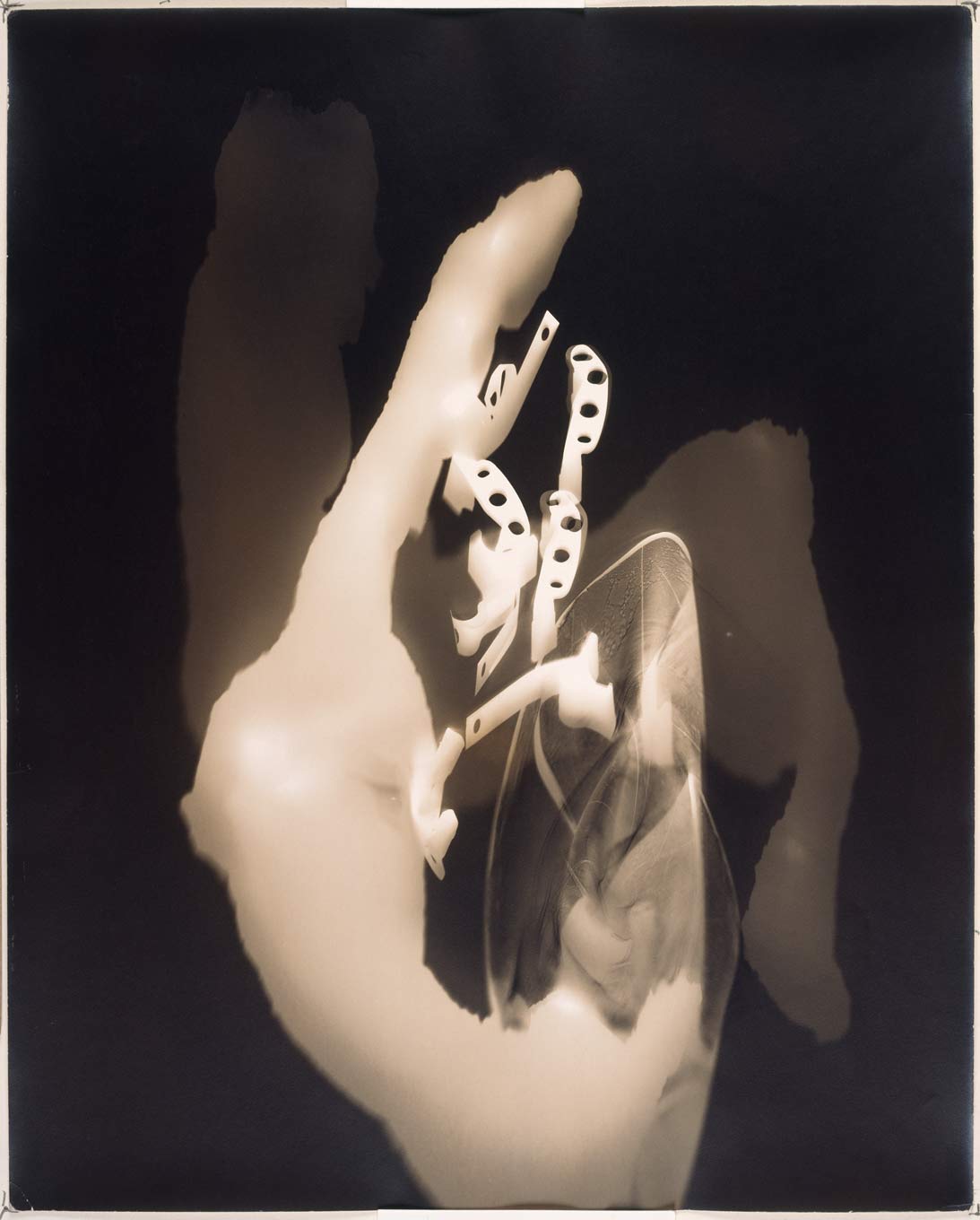
WHAT IS OPTICAL QUALITY?
Through the development of black-and-white photography. light and shadow were for the first time fully revealed; and thanks to it, too, they first began to he employed with something more than a purely theoretical knowledge. (Impressionism in painting may be regarded as a parallel achievement). Through the development of reliable artificial illumination (more particularly electricity), and the power of regulating it, an increasing adoption of flowing light and richly gradated shadows ensued; and through these, again a greater animation of surfaces and a more delicate optical intensification. This manifolding of gradations is one of the fundamental “materials” of optical formalism: a fact which holds equally well if we pass beyond the immediate sphere of black white-grey values and learn to think and work in terms of colored ones. When pure color is placed against pure color, tone against tone, a hard, poster-like decorative effect generally results. On the other hand the same colors used in conjunction with their intermediate tones will dispel this poster-like effect, and create a more delicate and melting impression. Through its black-white-grey reproductions of all colored appearances photography has enabled us to recognize the most subtle differentiations of values in both the grey and chromatic scales: differentiations that represent a new and (judged by previous standards) hitherto unattainable quality in optical expression. This is, of course, only one point among many. But it is the point where we have to begin to master photography’s inward properties, and that at which we have to deal more with the artistic function of expression than with the reproductive function of portrayal.
SUBLIMATED TECHNIQUE
In reproduction-considered as the objective fixation of the semblance an object we find just as radical advances and transmogrifications, compared with prevailing optical representation, as in direct records of forms produced by light (photograms). These particular developments are well known: bird’s-eye views, simultaneous interceptions, reflections, elliptical penetrations, etc. Their systematic co-ordination opens up a new field of visual presentation in which still further progress becomes possible. It is, for instance, an immense extension of the optical possibilities of reproduction that we are able to register precise fixations of objects, even in the most difficult circumstances, in a hundredth or thousandth of a second. Indeed, this advance in technique almost amounts to a psychological transformation of our eyesight, since the sharpness of the lens and the unerring accuracy of its delineation have now trained our powers of observation up to a standard of visual perception which embraces ultra-rapid snapshots and the millionfold magnification of dimensions employed in microscopic photography.
IMPROVED PERFORMANCE
Photography, then, imparts a heightened, or (in so far as our eyes are concerned) increased, power of sight in terms of time and space. A plain, matter-of-fact enumeration of the specific photographic elements -purely technical, not artistic, elements-will be enough to enable us to divine the power latent in them,
and prognosticate to what they lead.
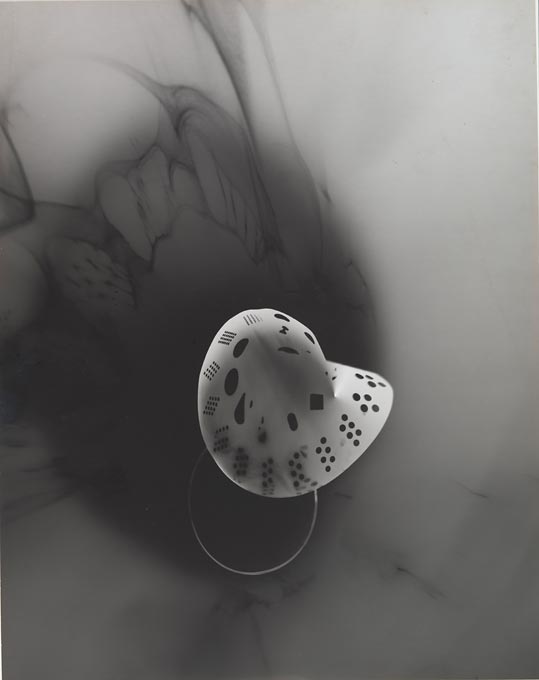
THE EIGHT VARIETIES OF PHOTOGRAPHIC VISION
1. Abstract seeing by means of direct records of forms produced by light: the photogram which captures the most delicate gradations of light values, both chiaroscuro and colored.
2. Exact seeing by means of the normal fixation of the appearance of things: reportage.
3. Rapid seeing by means of the fixation of movements in the shortest possible time: snapshots.
4. Slow seeing by means of the fixation of movements spread over a period of time: e.g., the luminous tracks made by the headlights of motor cars passing along a road at night: prolonged time exposures.
5. Intensified seeing by means of:
a) micro-photography;
b) filter-photography, which, by variation of the chemical composition of the sensitized surface, permits photographic potential ties to be augmented in various ways-ranging from the revelation of far-distant landscapes veiled in haze or fog to exposures in complete darkness: infra-red photography.
6. Penetrative seeing by means of X-rays: radiography.
7. Simultaneous seeing by means of transparent superimposition: the future process of automatic photomontage.
8. Distorted seeing: optical jokes that can be automatically produced by:
a) exposure through a lens fitted with prisms, and the device of reflecting mirrors; or
b) mechanical and chemical manipulation of the negative after exposure.
WHAT IS THE PURPOSE OF THE ENUMERATION?
What is to be gleaned from this list? That the most astonishing possibilities remain to be discovered in the raw material of photography, since a detailed analysis of each of these aspects furnishes us with a number of valuable indications in regard to their application, adjustment, etc. Our investigations will lead us in another direction, however. We want to discover what is the essence and significance of photography.
THE NEW VISION
All interpretations of photography have hitherto been influenced by the aesthetic-philosophic concepts that circumscribed painting. These were for long held to be equally applicable to photographic practice. Up to now, photography has remained in rather rigid dependence on the traditional forms of painting; and like painting it has passed through the successive stages of all the various art “isms”; though in no sense to its advantage. Fundamentally new discoveries cannot for long be confined to the mentality and practice of bygone periods with impunity.
When that happens all productive activity is arrested. This was plainly evinced in photography, which has yielded no results of any value except in those fields where, as in scientific work, it has been employed without artistic ambitions. Here alone did it prove the pioneer of an original development, or of one peculiar to itself.
In this connection it cannot be too plainly stated that it is quite unimportant whether photography produces “art” or not. Its own basic laws, not the opinions of art critics, will provide the only valid measure of its future worth. It is sufficiently unprecedented that such a “mechanical” thing as photography, and one regarded so contemptuously in an artistic and creative sense, should have acquired the power it has, and become one of the primary objective
visual forms, in barely a century of evolution. Formerly the painter impressed his own perspective outlook on his age. We have only to recall the manner in which we u cd to look at landscapes, and compare it with the way we perceive them now! Think, too, of the incisive sharpness of those camera por traits of our contemporaries, pitted with pores and furrowed by lines. Or an air-view of a ship at sea moving through waves that seem frozen in light. Or the enlargement of a woven tissue, or the chiselled delicacy of an ordinary sawn block of wood. Or, in fact, any of the whole gamut of splended details of structure, texture, and “factor” of whatever objects we care to choose.
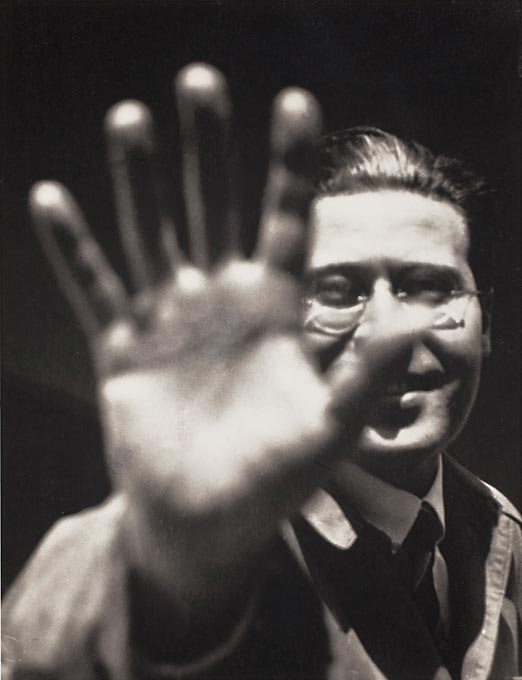
THE NEW EXPERIENCE OF SPACE
Through photography, too, we can participate in new experiences of space, and in even greater measure through the film. With their help. and that of the new school of architects, we have attained an enlargement and sublimation of our appreciation of space, the comprehension of a new spatial culture. Thanks to the photographer, humanity has acquired the power of perceiving its surroundings, and its very existence, with new eyes.
THE HEIGHT OF ATTAINMENT
But all these are isolated characteristics, separate achievements, not altogether dissimilar to those of painting. In photography we must learn to seek, not the “picture,” not the aesthetic of tradition, but the ideal instrument of expression, the self-sufficient vehicle for education.
SERIES (PHOTOGRAPHIC IMAGE SEQUENCES OF THE SAME OBJECT)
There is no more surprising, yet, in its naturalness and organic sequence, simpler form than the photographic series. This is the logical culmination of photography. The series is no longer a “picture,” and none of the canons of pictorial aesthetics can be applied to it. Here the separate picture loses its identity as such and becomes a detail of assembly, an essential structural element of the whole which is the thing itself. ln this concatenation of its separate but inseparable parts a photographic series inspired by a definite purpose can become at once the most potent weapon and the tenderest lyric. The true significance of the film will only appear in a much later, less confused and groping age than ours. The prerequisite for this revelation is, of course, the realization that a knowledge of photography is just as important as that of the alphabet. The illiterate of the future will be ignorant of the use of camera and pen alike.

